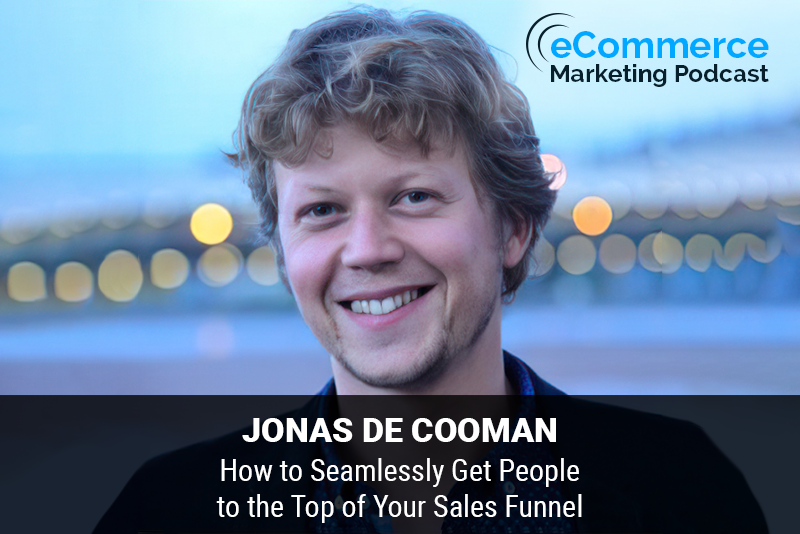
eCommerce Marketing Podcast
The eCommerce Marketing Podcast walks you through everything that goes into ecommerce marketing — from inbound marketing to paid advertising to conversions. Learn the strategies top marketing experts use to grow their businesses.
How to Seamlessly Get People to the Top of Your Sales Funnel – with Jonas De Cooman
byArlen Robinson
Marketing Strategies and Topics Covered in this Episode:
- Methods that any ecommerce company can implement to start building their sales funnel
- When pushing people through your funnel, how you seamlessly get them from the bottom of the funnel to the top of your sales funnel
- Recommended tools and resources for managing people in all phases of your sales funnel
- Examples of businesses that have successfully managed and grown an evergreen and winning sales funnel

In this episode of the Ecommerce Marketing Podcast, host Arlen Robinson interviews Jonas De Cooman, co-founder and CEO of Spott. Jonas shares his insights on effectively moving customers through the sales funnel by creating unique and interactive experiences with images, catalogs, and videos. With over 10 years of experience in digital marketing, Jonas has worked with global brands like Unilever and Coca-Cola.
Key Takeaways:
- Introduction to Jonas De Cooman (00:01:39)
- Background in engineering and marketing.
- Experience at Unilever and Coca-Cola.
- Transition to entrepreneurship and founding Spott.
- Importance of Inspirational Shopping (00:06:00)
- Moving from functional to inspirational shopping.
- Creating engaging content strategies to drive conversions.
- Examples of successful brands like H&M, Mango, and Ikea.
- Interactive Content to Boost Engagement (00:09:30)
- Using interactive videos and images to increase conversion rates and average order value.
- Enhancing SEO ranking with structured metadata.
- Providing seamless experiences from inspiration to action.
- Implementing Content Strategies (00:13:00)
- Creating visual content that engages users and guides them through the funnel.
- Examples from real estate and automotive industries.
- Using first-party data to improve marketing strategies.
- Examples of Successful Interactive Campaigns (00:18:00)
- Case studies of companies using interactive content to increase engagement.
- Highlighting brands that have embraced the power of visual storytelling.
- Importance of becoming a content creator and video producer.
- Future of Ecommerce Marketing (00:25:00)
- Transitioning to a visual-first approach.
- Importance of video content for future marketing strategies.
- Encouraging companies to adopt interactive content to stay relevant.
Bullet Points of Key Takeaways with Timestamps:
- [00:01:39] Introduction to Jonas De Cooman and his background.
- [00:06:00] Shift from functional to inspirational shopping.
- [00:09:30] Benefits of interactive content for engagement and conversion.
- [00:13:00] Implementing content strategies to move customers through the funnel.
- [00:18:00] Examples of successful interactive campaigns.
- [00:25:00] Future trends in ecommerce marketing and the importance of visual content.
Guest Information:
Jonas De Cooman
- Co-founder & CEO at Spott
- Email: [email protected]
- Phone: +32 492 98 86 68
- Website: Spott











